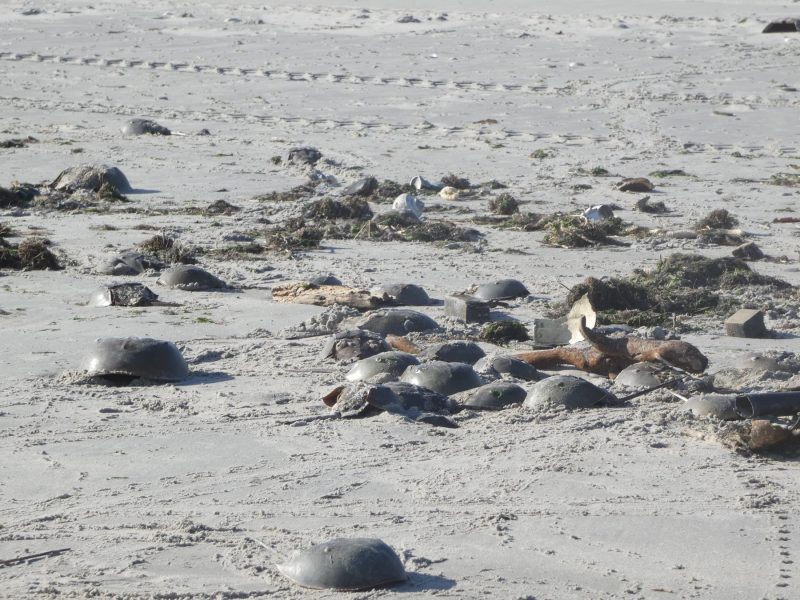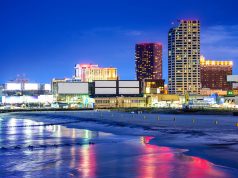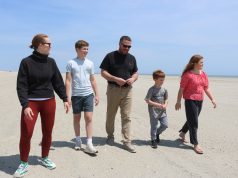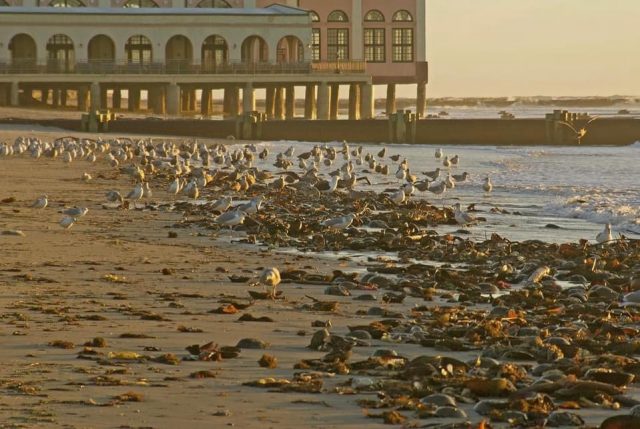
By MADDY VITALE and DONALD WITTKOWSKI
The latest winter storm churned up more than your typical clamshells, whelks and other marine life. Littering the Ocean City beaches over the weekend were hundreds, if not thousands, of horseshoe crabs in a mass stranding.
Horseshoe crabs are sea creatures that have been around for millions of years. They are not crabs. In fact, they are most closely related to the arachnid family. While they can be viewed by some as sci-fi looking, they are an important part of the ecosystem, according to marine scientists.
Meghan Kolk, conservation scientist with the Wetlands Institute in Stone Harbor, said she heard about the horseshoe crabs in Ocean City from a volunteer at the institute and saw photos on social media.
A volunteer at the institute and some concerned residents went down and surveyed the mass stranding. Horseshoe crabs littered many of the beaches, including near the Music Pier at Eighth Street and the Ocean City Fishing Club Pier 14th Street.
Not all of the horseshoe crabs were dead. Among the ones that were alive, there was also evidence of molting, a process of shedding their old shells in order to grow.
Luckily, as quickly as the horseshoe crabs seemed to appear on the beaches Sunday, they returned to the ocean with the high tide on Monday, Kolk said.
She speculated that many of them survived.
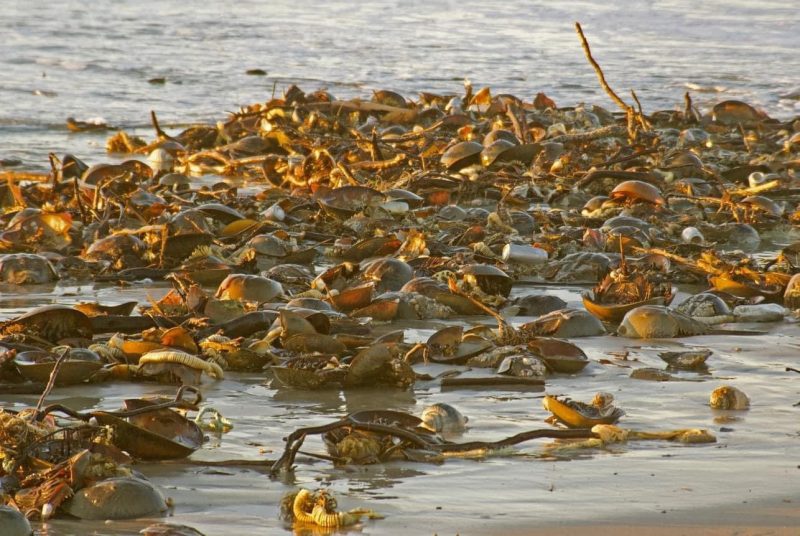
In summer, when it is dry, they have less of a chance to survive. But in winter, when it is damp, they can survive for a while out of the water, Kolk explained.
“It is a normal occurrence that happens over the winter, but it seems with more intense storms, it is happening more frequently,” she said of mass strandings of horseshoe crabs.
The full extent of the weekend’s stranding wasn’t known.
Mike Jargowsky, Sea Isle City’s emergency management coordinator, said in an interview Tuesday that he wasn’t aware of any horseshoe crabs washing up in Sea Isle. He said typically, if something does, it is whelk, but usually only when there is a northeast wind blowing off the ocean.
As far as marine life washing up in other areas besides Ocean City and Sea Isle goes, Kolk noted that whelk sometimes litter the shoreline in Wildwood Crest.
This is certainly not the first time for the phenomenon of horseshoe crabs being stranded on the beaches in Ocean City.
In January of 2022, Ocean City resident Linda Boris used her camera to document the stranding of numerous horseshoe crabs on beaches from 19th to 21st Streets. Hundreds of Horseshoe Crabs Discovered on Ocean City Beach | OCNJ Daily
“There was a tremendous sea of beached horseshoe crabs between 21st and 19th or so,” Boris said in an interview in 2022. “Some were dead. Some were slowly working their way back to the ocean. Some were burrowing holes.”
Kolk reinforced a message about the sea creatures.
She said that while horseshoe crabs are not endangered, the population has dwindled.
“The numbers have declined since the 1990s due to overharvesting,” Kolk said.
And while some may find horseshoe crabs to be a little creepy, they play an “extremely important” role in the ecosystem by serving as food to birds and other wildlife, she noted.
“Many species rely on them from shore birds and migratory birds to turtles and fish,” Kolk said. “They are considered a keystone species because a lot of other species rely on them.”
There is something people can do if they see horseshoe crabs stranded on the beach.
“You can turn them over and point them to the water or bring them close to the water,” Kolk explained.
For information about the Wetlands Institute of Stone Harbor visit https://wetlandsinstitute.org/
